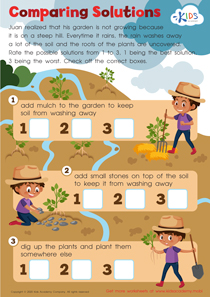Understanding quadrilaterals Worksheets for Ages 5-9
4 filtered results
-
From - To
Introduce young learners to the fascinating world of polygons with our "Understanding Quadrilaterals Worksheets" for ages 5-9. Designed to align with early math standards, these engaging worksheets help kids explore the properties of quadrilaterals, including squares, rectangles, trapezoids, and rhombuses. Through hands-on activities, colorful illustrations, and easy-to-follow instructions, students will enhance their geometric skills, sharpen their problem-solving abilities, and build a solid foundation for future mathematical success. Ideal for classroom or home use, these resources make learning geometry fun and accessible. Encourage your child's mathematical journey with our expertly crafted quadrilateral worksheets today!
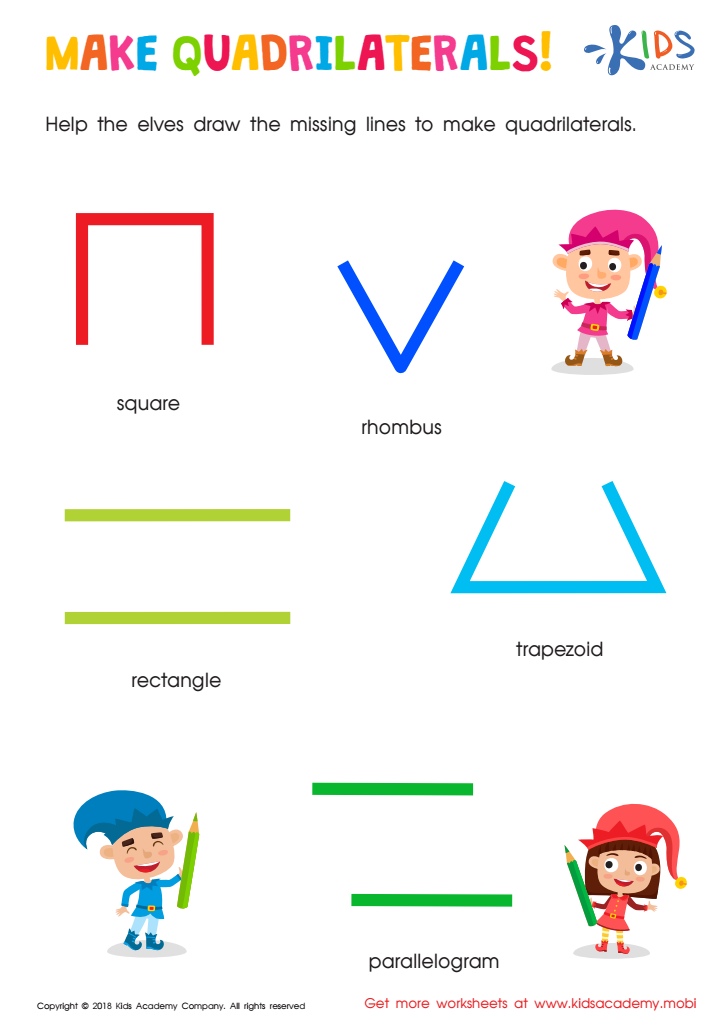

Make Quadrilaterals Worksheet
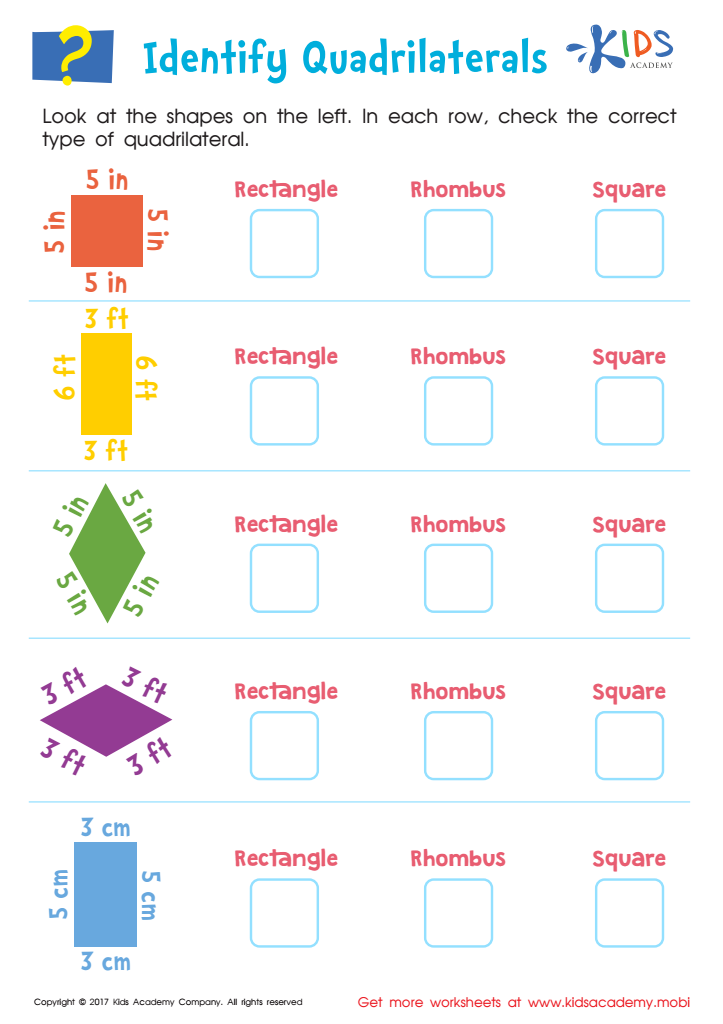

Identify Quadrilaterals Worksheet
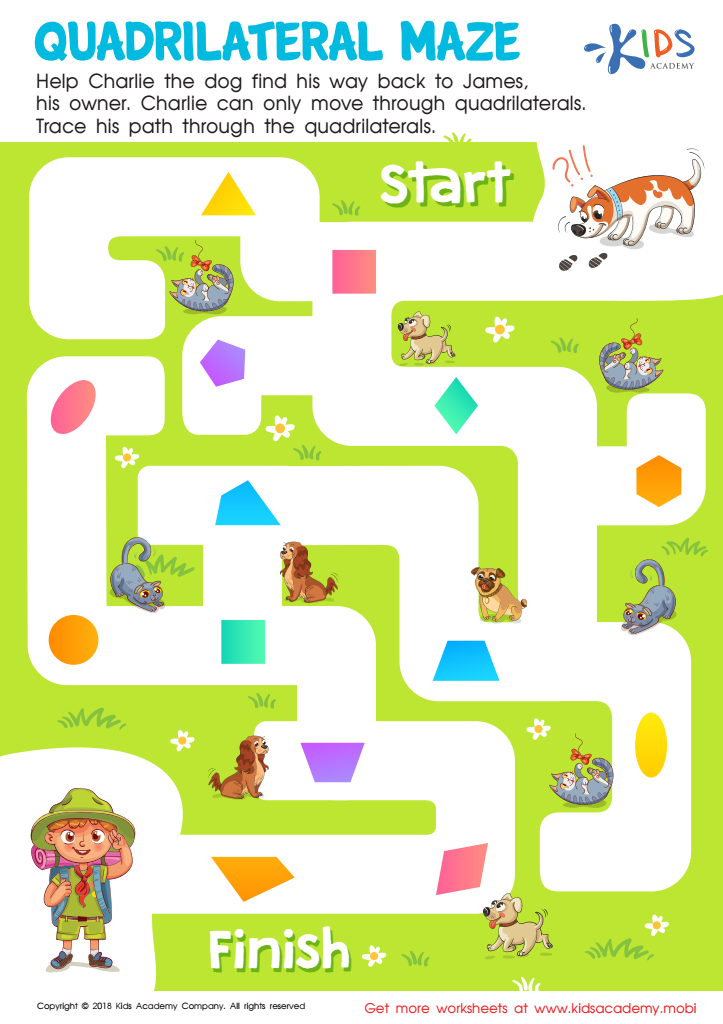

Quadrilateral Maze Worksheet
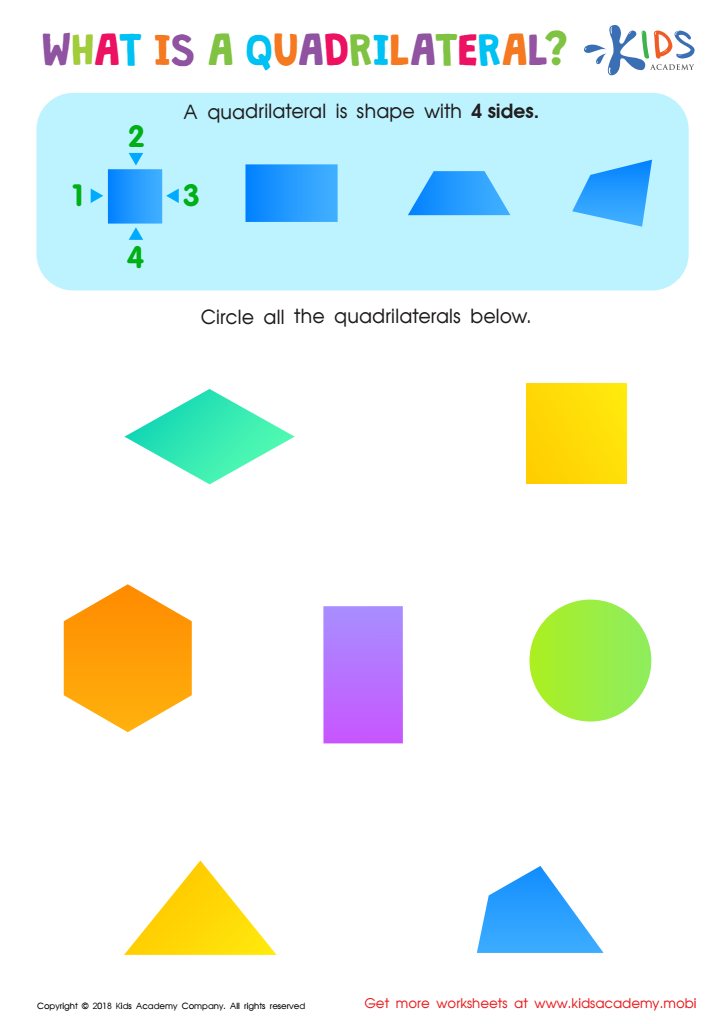

What Is a Quadrilateral? Worksheet
Understanding quadrilaterals is important for children ages 5-9 because it forms a foundational aspect of their mathematical and cognitive development. Quadrilaterals, such as squares, rectangles, and parallelograms, are basic geometric shapes that frequently appear in everyday life. By recognizing and understanding these shapes, children enhance their spatial awareness and their ability to categorize and compare objects, which are vital skills in both academic and real-world settings.
Learning about quadrilaterals also helps children develop critical thinking and problem-solving abilities. When children explore the properties of quadrilaterals, such as the number of sides, angles, and the characteristics of parallel lines, they engage in analytical thinking. This analytical process strengthens their reasoning skills, which are essential for more complex mathematical concepts they'll encounter later in their education.
Moreover, an early introduction to geometry promotes a positive attitude towards mathematics. Children who grasp basic geometric concepts early on often find math less intimidating and more enjoyable, laying the groundwork for future success in the subject. Finally, understanding shapes and their properties is not just confined to math but extends to other areas such as art, design, and even technology. Therefore, parents and teachers should pay attention to and support children's learning of quadrilaterals to provide them with a well-rounded education.
 Assign to My Students
Assign to My Students









